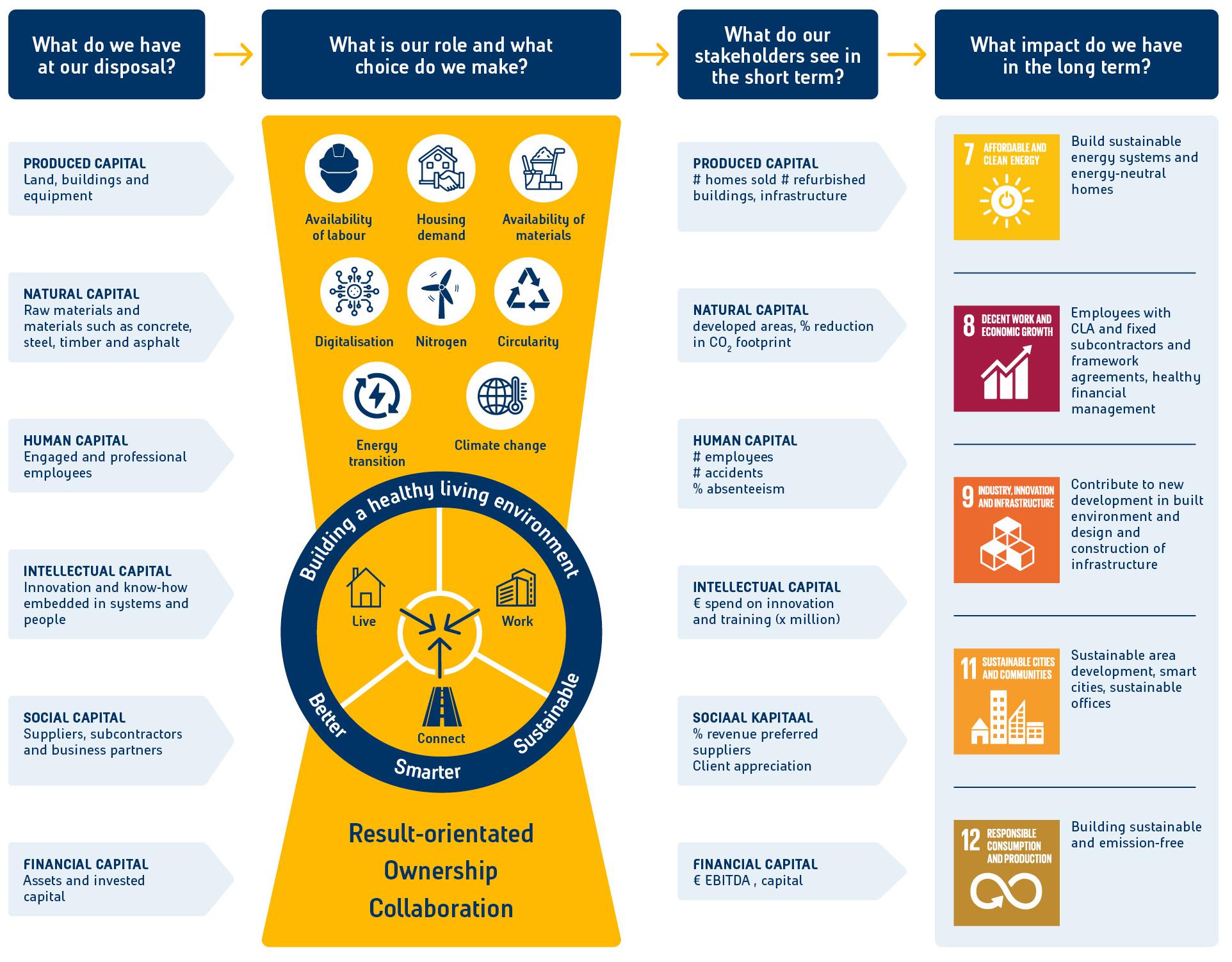Heijmans focuses on making a positive contribution to society as a whole. Our value creation model provides insight into how we use raw materials and other so-called capital resources to add value by producing goods and services. Our value creation model can be interpreted as follows:
Business model and strategy
Our primary focus is on the operationalisation of our strategy ‘Creators of a healthy living environment’. With the realisation of the strategy, we put our mission to create healthy living environments into action. The main pillars here are Better, Smarter and more Sustainable. We do this with an organisation whose core values are: result focus, ownership and collaboration. Plus we take into account a number of key trends and developments that have an impact on our business model, such as the energy transition and mobility and housing needs.
Input
The input in the value creation model consists of everything we need to initiate value creation. This ranges from the buildings we are housed in, to the brainpower and manpower we need to realise our products. This annual report includes a number of examples in each category.
Output
The output consists of our results, the tangible products and services that are shown in the same categories with examples. These include obvious products such as our homes or roads, but also less tangible contributions, such as our contributions to knowledge development or to the integrated chain.
Impact
Ultimately, Heijmans’ output impacts a number of social issues. Using a Sustainable Development Goals (SDGs) impact analysis, we have determined which of the 169 sub-goals we have the most impact on. See also appendix 11.6.9. Broadly speaking, these are developing affordable and clean energy, creating jobs and economic growth, industrialisation and building infrastructure, developing sustainable cities and communities and encouraging responsible consumption and production.
In recent years, we have formulated performance indicators for several non-financial ambitions, ambitions that can be linked to the SDG targets. With the performance indicators included, we measure the current situation in relation to value creation, but also the impact on society. Our main positive impact consists of creating buildings to live and work in, facilitating mobility and realising facilities to mitigate climate change (dykes, water storage). Our main negative impact consists of emissions (such as CO2 and nitrogen), resource consumption and waste. In the KPI table in Annex 11.6.4, we show how this relates to the goals in our strategy, to our material themes and to the SDGs we have selected. In doing so, we also indicate what impact we are creating in society, for example in the context of climate change.
